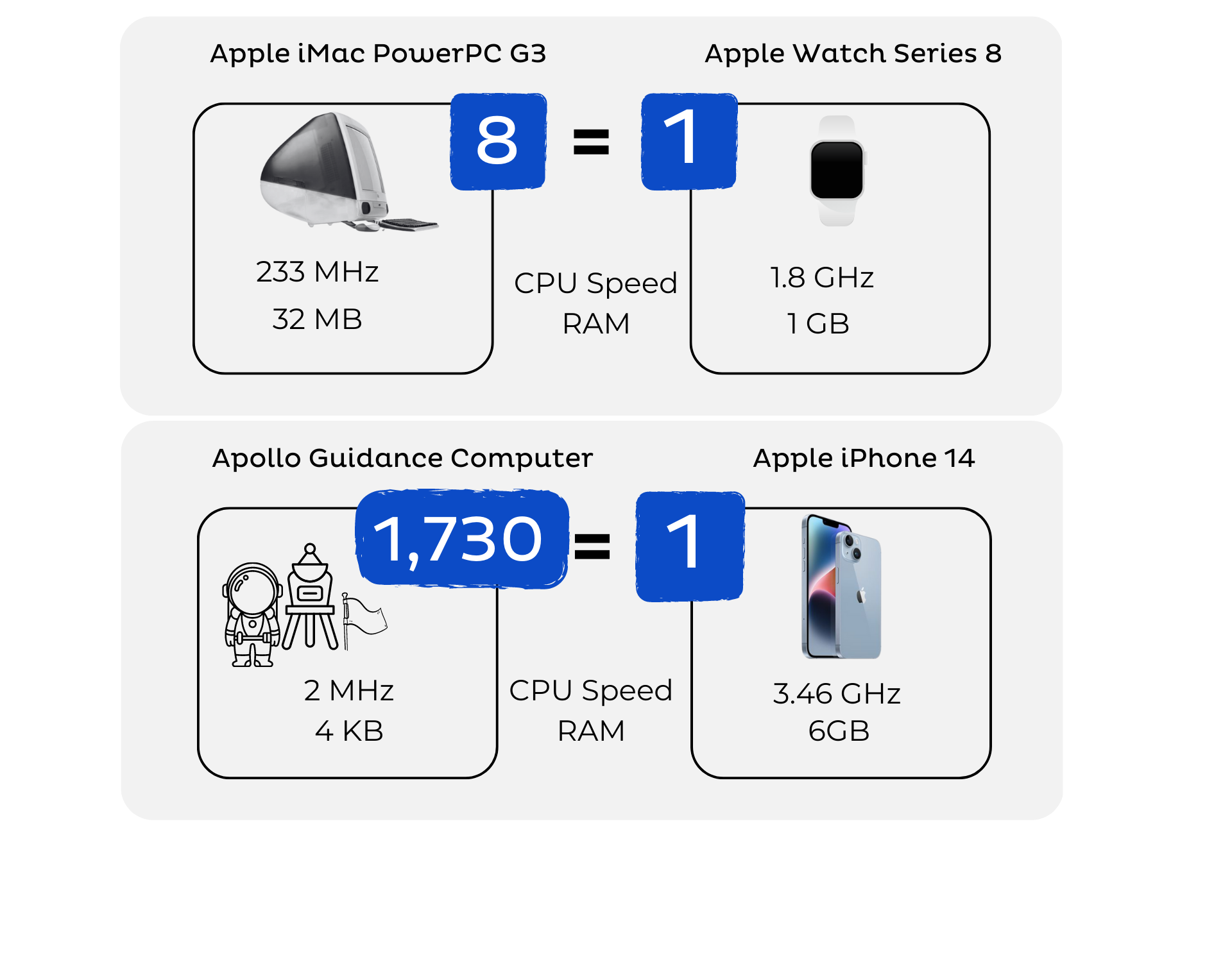The Legacy Code Trap
Have a think for a second what was the world like at the end of the last century, it was a world where we wrote postcards, a world where email on a phone was largely limited to a device called a blackberry, a world where text messaging was rare and the idea of sending a photo of the food you’re eating to your friends unheard of. A world where the Tesla, iPhone, and Netflix did not exist.
You are probably thinking why am I reminiscing back to the last century? The reason being most travel technology providers were developing their systems back then however, we are now living in a post COVID world and the realisation that old systems cannot provide or deliver to the needs of this era has materialised for lots of travel and leisure businesses.
So, to unravel this story lets go back to 1970 when Gordon Moore the head of Intel predicted that computers would double in power and halve in cost every two years, ‘Moore’s Law’, there’s a link in the comments to a great article if you’d like to read more. When you apply Moore’s Law to the travel software built in the late nineties the computing power available today is 4,000 times faster than it was. That said you don’t have to go back 30 years to see how much computer power has evolved, a study by Brad Bourque in 2015 found CPUs in 2015 were up to 60 times quicker than those sold just a decade ago in 2005.
Tech evolution

What this means for travel tech
For the most part the travel sector has not taken advantage of this curve, yes the costs have fallen, yes we can book much more than we could online but in reality that’s about it. So many companies still use the software they invested in back then because they consider the change too onerous yet by living in the past they are allowing smaller agile companies to breeze past them by using the much more agile software that can be built today; software that takes advantage of the speed, software that is immeasurably better in almost every way, not just because it is so much quicker.
Modern software is written using frameworks that make routine tasks simple and fast. Tasks that would have taken two or three hundred lines of code can be done in one line. Intrinsically everything we do can be done much more quickly, which means we can add complexity and what’s more we can do this at a fraction of the cost, both in development terms and in operational cost. Perhaps even more ground-breaking are the opportunities the cloud offers. Engineered using modern techniques the code we write can out of the box link to and use facilities online. Facilities such as reporting, accounting, and CRM, you can benefit from a ‘best of breed’ approach. For instance, instead of buying a system with an inbuilt CRM or accountancy system choose a system that integrates to market leading platforms. Most platforms can never match an off the shelf equivalent package, such as Sales Force or Xero, that’s supported by specialists in those fields with millions in their development budgets. Systems that don’t utilise this approach face the danger that the software will fall faster and faster behind the curve of more agile competitors with only one discernible result.
The inconvenient truth
There is another inconvenient truth about software written many years ago. Over the years, the developers who designed the code have almost all moved on, the people who replaced them under time pressure never understood the nuances of the original design, so they added and changed the code, patching it and modifying it without understanding that they were introducing a bug somewhere else. The code over time becomes spaghetti, a tangled mess of buggy slow code. Furthermore, the existing client base are resistant to change, it becomes incredibly difficult to change code when you have many clients, as what you change for one would affect all the clients, some of whom don’t want the change, so you add client specific branches each of which complicates the issue further. A small change becomes a bigger more expensive change, new code to provide a new feature expensive and this curve gets worse and worse.
The “Legacy Code Trap” is simply this, it is a system that over time becomes more expensive to maintain, modify and expand, a once wonderful system that has become resistant to change. There is a great analogy here as people are the same, they become resistant to change too, funnily enough in my experience when you work with them to affect that change, they rarely look back wistfully.
The future
So why would you stay with such a system? Unfortunately, because in the travel sector until very recently that is broadly the only choice there was. I would ask one question though, would you want to go back to a world without your mobile phone with its inbuilt navigation systems, music/videos on demand, a camera? We may moan about the intrusive nature of them, but would you? Really?
The time to change is now! Embrace a modern system as although some legacy software has been rebranded and reskinned to make it look modern, under the skin it is old, flaky, and slow, expensive to run and small changes are very expensive indeed.
In this post covid world where agility is a fundamental requirement isn’t it about time to look to the future, if covid taught us anything it taught us that life is too short to stay as we were.
If you’d like to know more, please follow us on LinkedIn we regularly post and share travel tech topics and we’d be delighted to provide a free demo of Erin, our cloud-native travel management and reservations platform.


